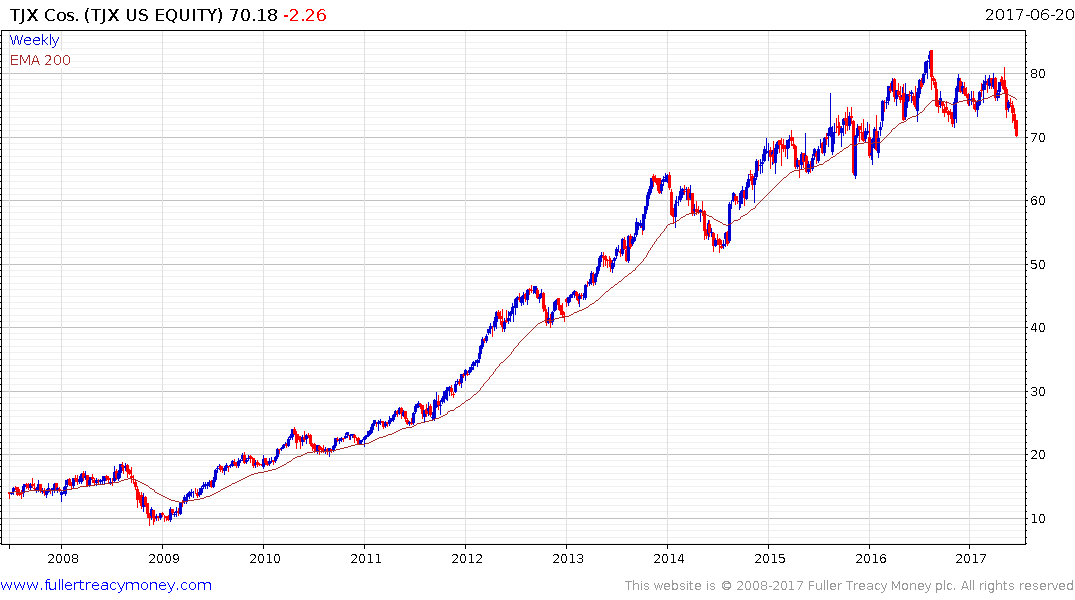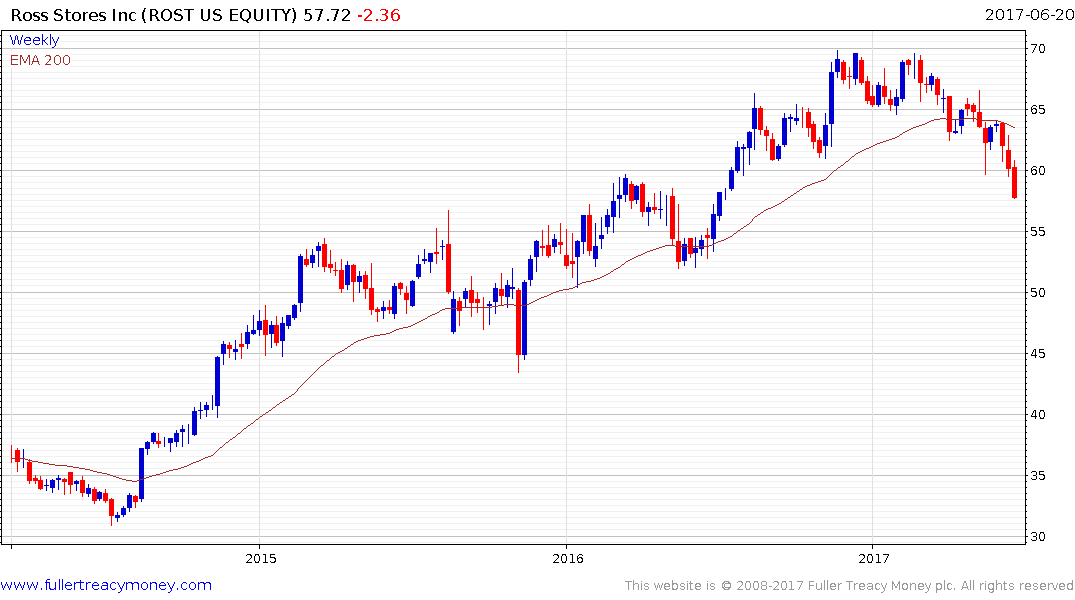Amazon Cometh to Grocery What Does it Mean?
Thanks to a subscriber for this report from Morgan Stanley which may be of interest. Here is a section:
Here is a link to the full report.
There has been a great deal of media coverage of Amazon’s foray into brick and mortar grocery stores, albeit at the high end side of the market. Kroger and Target extended downtrends on the news amid widespread speculation that the middle of the market is being hollowed out and that is an argument I have sympathy with as German discounters Aldi and Lidl expand in the US.
However it is also worth considering that Amazon is not only expanding into the grocery sector, it is also making a concerted effort to break into the clothing market. However the deterioration in shares like TJX and Ross Stores is somewhat different since these companies generally appeal to the lower to mid tiers of the market. Nevertheless they exhibit similar patterns of deterioration to what we are seeing from the grocery and automotive parts retailers.

TJX rallied from a low near $10 to a 2016 high above $80 but failed to hold the breakout in August and has since fallen to break the medium-term progression of higher reaction lows. It has experienced other periods of underperformance in the course of what had been an impressive seven-year rally but a clear upward dynamic will be required to check the slide.

Ross Stores rallied even more from its 2008 low but experienced a serious deterioration over the few months and increasingly has top formation completion characteristics.
The US retail sector employs about 16 million people and certain segments of it are clearly in trouble. Here is a section from an article that appeared on Racked.com
Yet, says Carrie Gleason, co-founder of the Retail Action Project and director of the Fair Workweek Initiative at the Center for Popular Democracy, or CPD, the retail sector as a whole is still projected to grow in the coming years. “What is happening in retail right now is a result of an oversaturation of the market, increasing pressure and competition from online retailing, and also companies that just haven’t adapted to the way that people shop today. J.C. Penney, Macy’s, Payless, Radio Shack, Sears, Wet Seal — all of those companies have not been doing well for a very long time, even before the explosion of Amazon Prime.”
The underperformance of the retail sector represents a headwind to employment growth and wage growth. The Fed is relying on the assumption that wage growth will follow labour market tightness as part of its rationale for boosting interest rates. If the deterioration in the share prices of an increasingly wide proportion of the retail sector influences corporate decisions to shave their workforces that will likely influence the Fed’s decision on the timing of rate hikes.
Back to top

